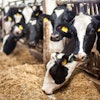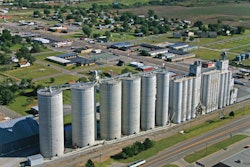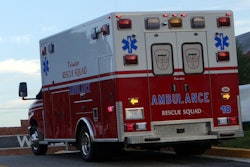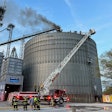
Grain industry injuries range from grain bin explosions and entrapment to respiratory diseases. Most incidents can be avoided however through proper maintenance, procedures and training, saysa report from AgPro.
John Lee, safety, health and environmental services director for the Grain and Feed Association of Illinois, says over all, the grain elevators he visits work hard to operate safely.
“They’re aware of the hazards,” says Lee. “It’s the ‘it won’t happen to me’ mentality that is the problem.”
Although Purdue University’s grain dust explosions reports show a steady decline over the past decade, the 2017 research reported seven grain dust explosions in the U.S., two more than in 2016. The number of fatalities also rose in 2017 from three to five.
With grain dust explosions, the main factors at play are outlined in what Purdue calls the grain dust explosion pentagon. By eliminating just one of the five factors, an incident can usually be avoided.
The factors include: grain dust, dispersion, confinement, oxygen and ignition.
Read the full articlehere.





















